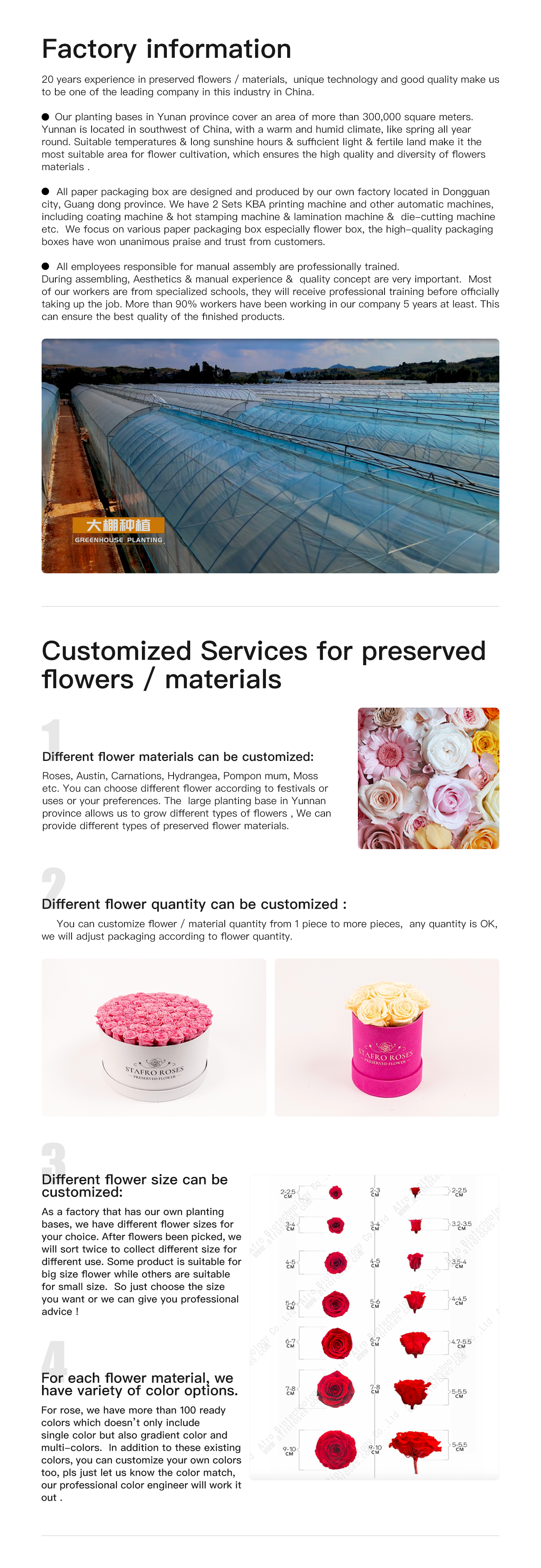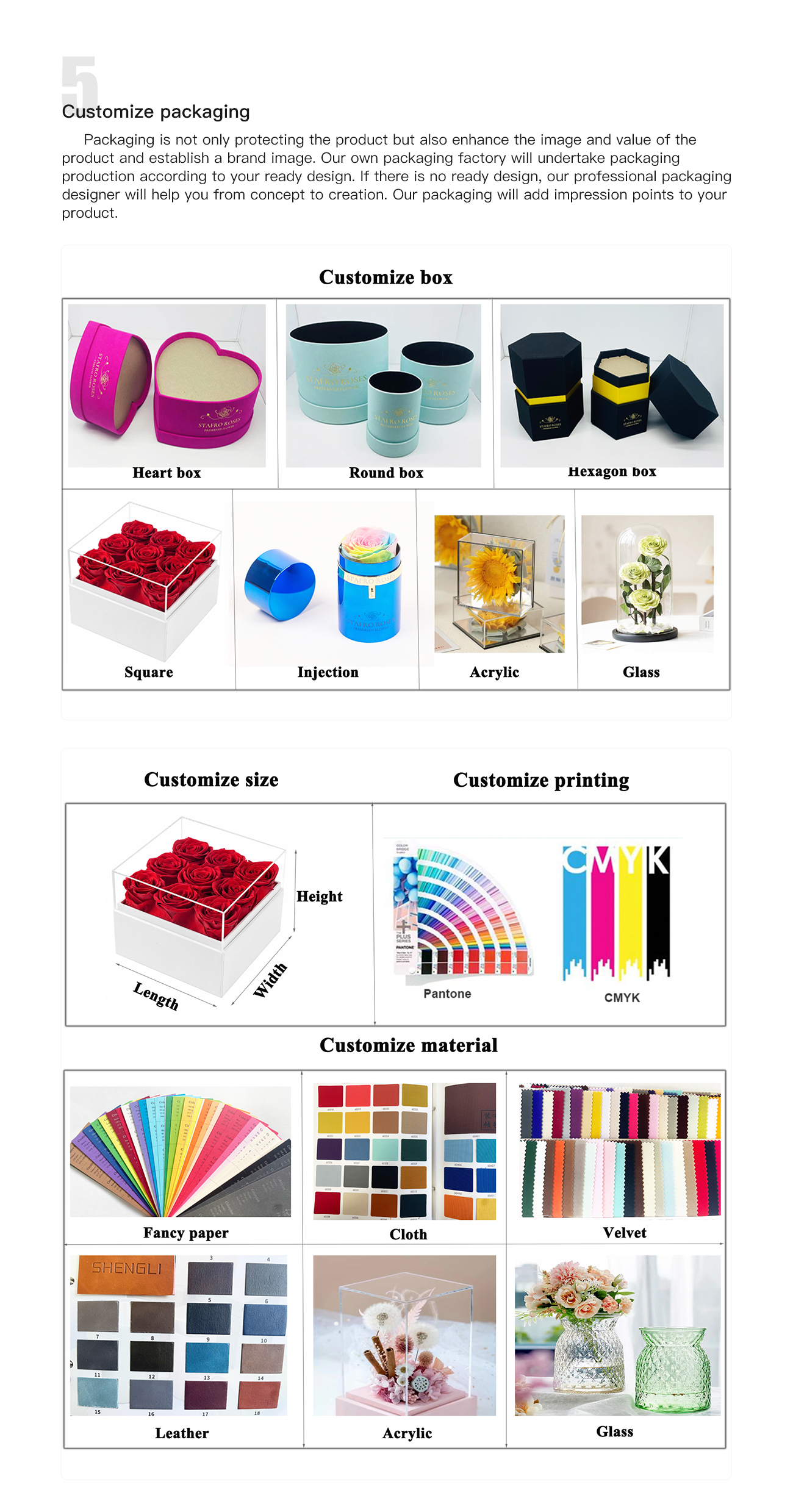
Products


History of preserved flower development
The development history of preserved flowers can be traced back to the late 19th and early 20th centuries. Initially, people began using drying and processing techniques to preserve flowers so that their beauty could be enjoyed throughout the year. This technique first appeared in the Victorian era, when people used desiccants and other methods to preserve flowers for ornaments and souvenirs.
Over time, the technique of drying flowers has been refined and perfected. In the second half of the 20th century, with the advancement of science and technology and the continuous exploration of flower preservation technology, the production technology of immortal flowers has been further improved. New processing methods and materials allow preserved flowers to look more realistic and last longer.
In recent years, preserved flowers have become more and more popular due to their reusability. At the same time, the technology for making immortal flowers is also constantly innovating to meet the market’s demand for more natural and environmentally friendly flowers. Modern techniques for making preserved flowers include a variety of chemical treatments and materials to ensure that the flowers retain their bright appearance for a long time.
Current market situation of preserved flower
The market of preserved flowers is currently in a stage of rapid growth and is favored by more and more people. This trend is mainly due to the following factors:
1.Increased awareness of environmental protection: As people pay more attention to environmental protection and sustainable development, preserved flowers are becoming more and more popular as a reusable flower material. Compared with fresh flowers, preserved flowers can maintain their bright appearance for a long time, reducing the frequent purchase and waste of flowers.
2.Long-lasting and economical: Preserved flowers last longer and can be kept for several years or even longer, so they have advantages in long-term viewing and decoration. Although the initial cost of preserved flowers is higher, many consumers are willing to pay a higher price for them considering their long-term benefits.
3.Creativity and personalized needs: Preserved flowers can be made into floral arrangements of various shapes and styles through various processing and designs, meeting people’s needs for personalized and creative decorations. This trend of personalized customization has also promoted the development of the preserved flower market.
4.Market demand for gifts and decorations: Preserved flowers have a wide range of applications as gifts and decorations, and are favored by business and individual consumers. For example, the demand for preserved flowers continues to grow in weddings, celebrations, home decoration and other fields.
In general, the preserved flower market is showing a rapid growth trend driven by factors such as increased environmental awareness, increased demand for personalization, long-term effectiveness, and economy. With the continuous innovation of technology and consumer demand for high-quality flowers, the preserved flower market is expected to continue to maintain a good momentum of development.
































